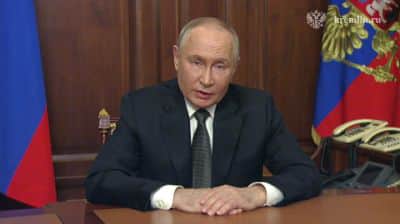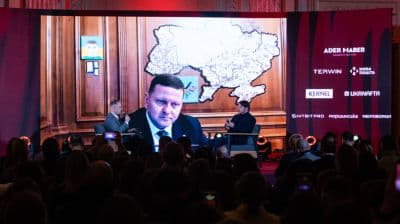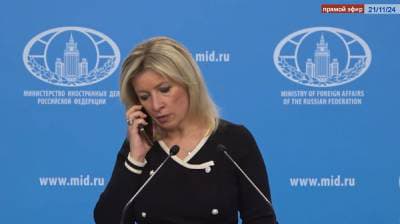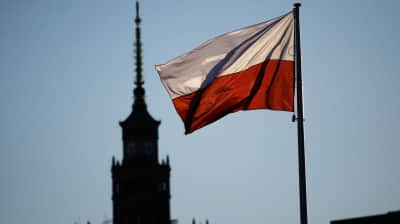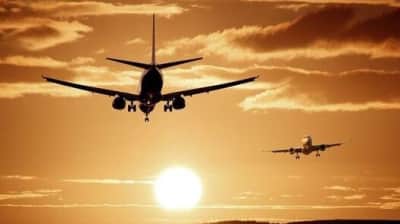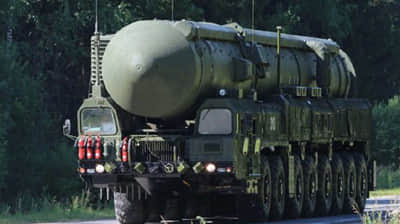Russia thoroughly preparing for large-scale conflict with NATO – ISW
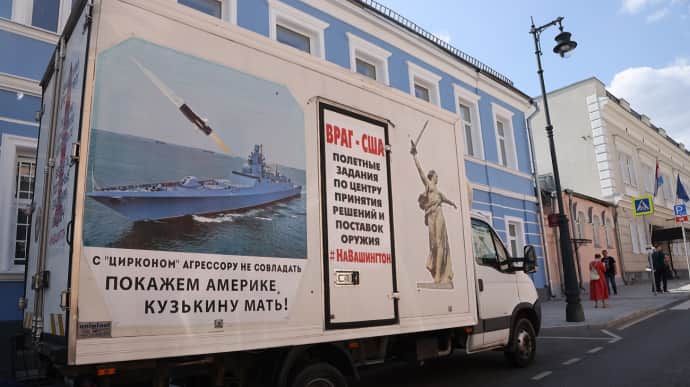
Certain financial, economic and military indicators have shown that Russia is preparing for a large-scale conflict with NATO using conventional weapons.
Source: Institute for the Study of War (ISW)
Details: ISW analysts stated that an attack was likely to take place in a shorter timeframe than some Western analysts have suggested, but not in the near term.
Russian President Vladimir Putin met with the leaders of the State Duma factions on 19 March and outlined his priorities for his fifth presidential term.
He called on Duma faction leaders to act in the interests of the state, not corporations or parties, and stressed the importance of appointing people based on qualifications and competence.
Putin is likely trying to create the conditions for stabilising Russia's long-term financial position at a high level of public spending and signalling that Russia's long-term financial stability will require at least some inconvenience to wealthy Russian security officials with political influence.
Putin is presumably aware that financial reprisals against the siloviki [Russian security officials with political influence] could jeopardise the political relations he has built with them, and he is trying to mitigate this.
In addition, the ISW stated that Russia does not seem to be facing a financial crisis, and the increase in military spending has been the biggest change in Russian budget policy. Therefore, analysts suggested that efforts to secure Russia's financial future are likely to be aimed at creating long-term conditions rather than addressing immediate financial problems.
Russia continues to try to circumvent international sanctions, and the International Monetary Fund estimated that Russia's GDP would grow by 2.6% in 2024 and reported that Russia's GDP grew faster than the economies of all the G7 countries in 2023.
The ISW noted that Polish President Andrzej Duda stressed in an interview with CNBC on 20 March that Putin was stepping up efforts to shift Russia's economy to a military footing to be able to attack NATO as early as 2026 or 2027, citing unspecified German studies.
Danish Defence Minister Troels Lund Poulsen said on 9 February that new intelligence indicated that Russia could attempt to attack a NATO country within three to five years, faster than NATO's 2023 estimates said.
The Russian threat is largely dependent on the financial resources that Putin is willing to devote to war. Therefore, it is clear that Putin is preparing for the risk of damaging his relations with wealthy Russian businessmen. In this context, he constantly announces plans to expand the Russian army.
Putin's attempts to create conditions for the stabilisation of the Russian economy and finances are most likely part of Russia's financial and domestic preparations for a potential future large-scale conflict with NATO, not just a prolonged war in Ukraine.
In addition, the Russian army continues to implement structural reforms to simultaneously support the war in Ukraine and expand Russia's armed forces in the long term in preparation for a possible future large-scale conflict with NATO.
Russian Defence Minister Sergei Shoigu addressed the board of the Russian Ministry of Defence on 20 March and brought up military reforms aimed at improving the combat capabilities of the Russian army.
Shoigu reported that Russia had formed the Dnipro River Flotilla and a "brigade" of boats within the flotilla.
Russian and Ukrainian sources confirmed that Russian troops were able to conduct a limited raid and temporarily land on the right (western) bank of Kherson Oblast on 13 March, and that the Dnipro River Flotilla could actually support such attempts to cross the river.
Shoigu outlined several ongoing efforts to strengthen Russia's military capabilities, more likely as part of Russia's long-term efforts to prepare for a potential conventional war with NATO than as part of the ongoing war against Ukraine.
He stated that Russia had formed an army corps and a motorised infantry division.
Shoigu also claimed that the Russian military planned to form two combined arms armies, 14 divisions and 16 brigades by the end of 2024.
The ISW continues to assess that Russia currently lacks the manpower, military infrastructure and training capacity to properly staff several entirely new divisions.
Such reforms, however, are most likely aimed at building Russia's long-term military capabilities.
Personnel changes in the Russian Defence Ministry may be additional indicators of Russia's preparation for a long-term conflict.
Shoigu introduced Lieutenant General Andrei Bulyga as Deputy Minister of Defence for Logistics during a speech at the Defence Ministry on 20 March.
To quote the ISW’s Key Takeaways on 20 March:
- Several Russian financial, economic, and military indicators suggest that Russia is preparing for a large-scale conventional conflict with NATO, not imminently but likely on a shorter timeline than what some Western analysts have initially posited.
- The Russian military continues to undertake structural reforms to simultaneously support the war in Ukraine while expanding Russia’s conventional capabilities in the long term in preparation for a potential future large-scale conflict with NATO.
- Ukraine’s Defence Intelligence reportedly conducted a drone strike against a Russian air base in Saratov Oblast on 20 March amid further indications that Ukrainian drone strikes within Russia are achieving limited asymmetric effects against Russian military assets and economic output.
- Kremlin-affiliated actors in the pro-Russian Moldovan autonomous region of Gagauzia are invoking narratives that mirror previous Russian claims about Ukraine in the years leading up to Russia’s 2022 full-scale invasion of Ukraine, likely as part of the Kremlin’s wider hybrid efforts to destabilise Moldova.
- Russian forces recently made confirmed advances near Kreminna and Donetsk City on 20 March.
- The Russian military continues to train drone operators for operations in Ukraine.
Support UP or become our patron!
